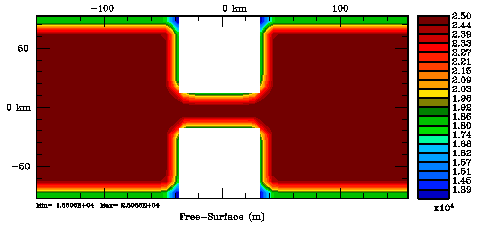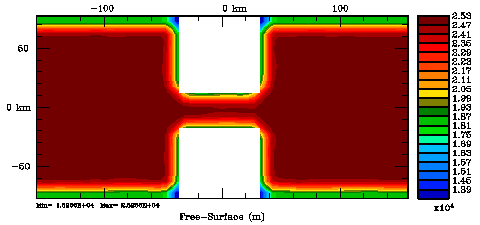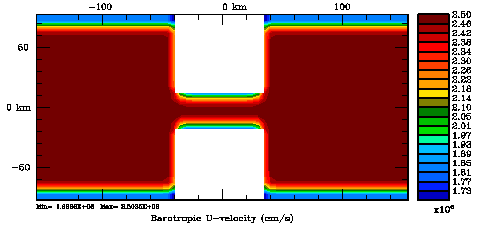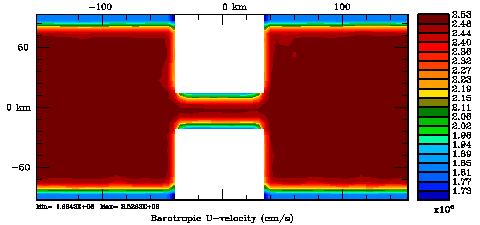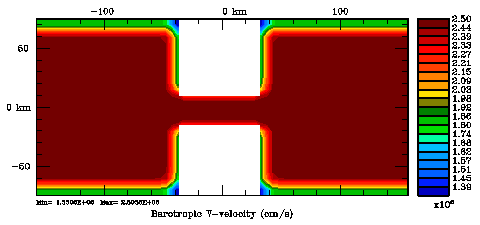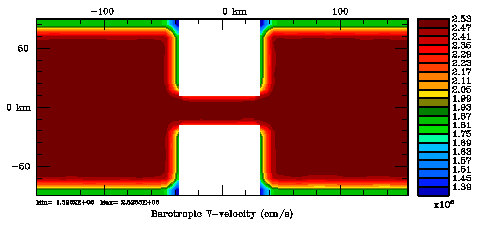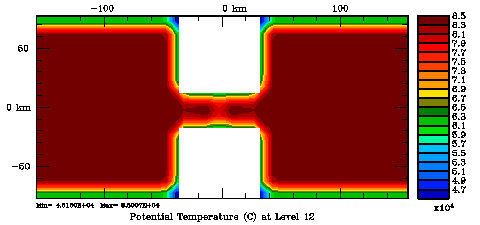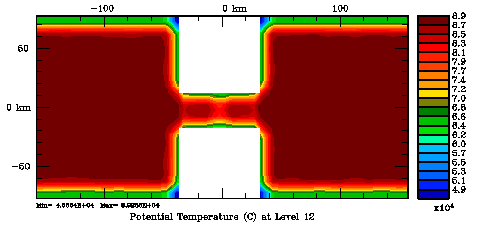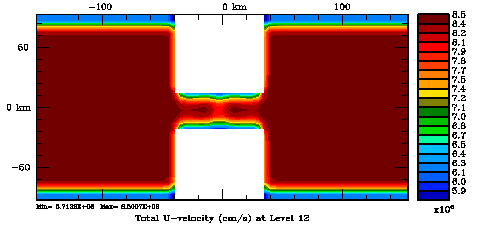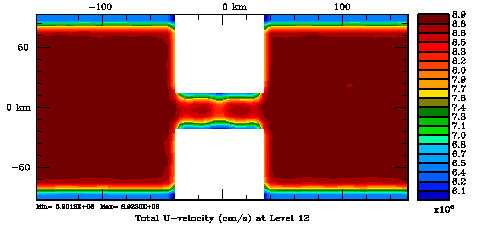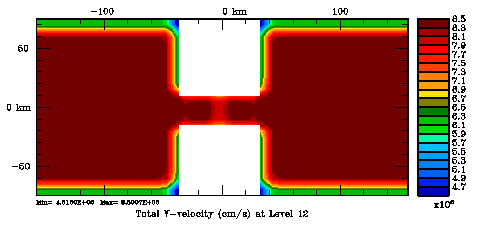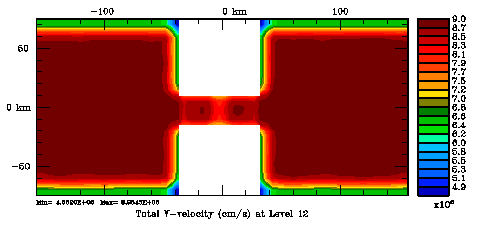- Corrected few bugs in the optimal observation driver, OPT_OBSERVATIONS. Many thanks to Julia for help me tracking these bugs. This driver seems to be working well and can be used in adaptive sampling to help designing observational networks.
- Commented out the warning message in opencdf.F when the global attribute is missing in input NetCDF files.
- Added a new set-up for the Shallow Water 2006 Experiment in the Mid-Atlantic Bight. This application has a coarse and finer grid: SW06_COARSE and SW06_FINE.
- The 4DVAR background covariance normalization coefficients for tracers is shown below for SW06_COARSE:
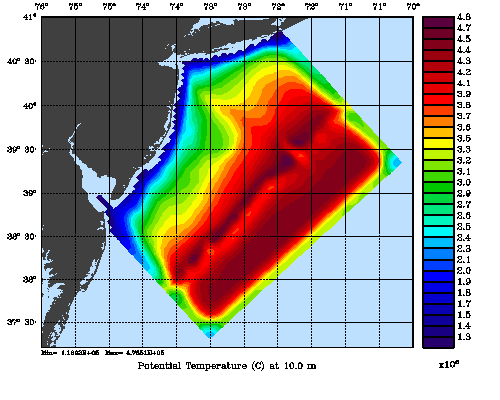
These are computed using the exact method for a horizontal and vertical decorrelation scales of 20 km and 20 m, respectively. This implies that the horizontal convolution for these length scales requires 64 iterations of the horizontal diffusion and only 2 iterations of the implicit vertical diffusion. The implicit diffusion is unconditionally stable so we can take very large time-steps, even if the minimum thickness is just 1.3 m. In this application we are using a value of Hgamma=0.5 and Vgamma=0.05. Hgamma and Vgamma are the horizontal and vertical stability and accuaracy factors used to scale the time-step of the convolution operator below its theorethical limit. The value of Vgamma is forced to be small in the implicit computation to insure at least two iterations. Also notice that the number of iterations, NHsteps and NVsteps, are always forced to be even since only half of the steps are iterated in the squared-root tangent linear and adjoint diffusion operators. Please always check these values written to standard output before using the 4DVAR algorithms.
Minimum X-grid spacing, DXmin = 5.26835784E+00 km Maximum X-grid spacing, DXmax = 5.58390264E+00 km Minimum Y-grid spacing, DYmin = 5.05224079E+00 km Maximum Y-grid spacing, DYmax = 5.35460591E+00 km Minimum Z-grid spacing, DZmin = 1.33333333E-01 m Maximum Z-grid spacing, DZmax = 2.86550363E+02 m Horizontal convolution, NHsteps, DTsizeH = 64 3.19064213E+06 s zeta Horizontal convolution, NHsteps, DTsizeH = 64 3.19064213E+06 s ubar Horizontal convolution, NHsteps, DTsizeH = 64 3.19064213E+06 s vbar Horizontal convolution, NHsteps, DTsizeH = 64 3.19064213E+06 s u Horizontal convolution, NHsteps, DTsizeH = 64 3.19064213E+06 s v Horizontal convolution, NHsteps, DTsizeH = 64 3.19064213E+06 s temp Horizontal convolution, NHsteps, DTsizeH = 64 3.19064213E+06 s salt Vertical convolution, NVsteps, DTsizeV = 2 2.05277776E+03 s u Vertical convolution, NVsteps, DTsizeV = 2 2.05277776E+03 s v Vertical convolution, NVsteps, DTsizeV = 2 2.05277776E+03 s temp Vertical convolution, NVsteps, DTsizeV = 2 2.05277776E+03 s salt
